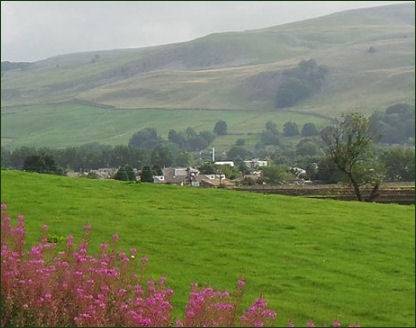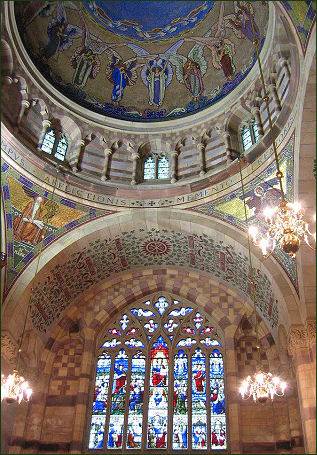Giggleswick
OS grid reference:- SD 809 647
 The village of Giggleswick is situated on the B6480 road, less than a mile (1.6 km) to the north-west from the town of Settle.
The village of Giggleswick is situated on the B6480 road, less than a mile (1.6 km) to the north-west from the town of Settle.
The village is recorded as Giggelesvvic in the Domesday Survey of 1086. The name derives from the Old English language and means dwelling or farm of a man called Gikel or Gichel. Giggleswick has retained its rustic charm, with mullioned windows and carved lintels in many of the old cottages, stone bridges and a market cross. The village offers many places to eat and drink as well as self-catering cottages and guest houses.
 Giggleswick is noted for its public school, rooted in a Grammar School founded in 1512, and the school can claim to be one of the oldest public schools in the country.
Giggleswick is noted for its public school, rooted in a Grammar School founded in 1512, and the school can claim to be one of the oldest public schools in the country.
The School Chapel (pictured right) is a distinctive structure with a copper dome, built through the generosity of one Walter Morrison, to mark the Diamond Jubilee of Queen Victoria. He commissioned T G Jackson, a leading architect of the time, work on the chapel begun in 1897 and was completed in 1901. The architect's challenge was to design a Gothic building with a dome (as specified by Morrison) and yet make it appear as if it were natural to the surroundings.
The village church, a Grade I listed building, is dedicated to St Alkelda, an obscure Anglo-Saxon saint and a princess who was martyred by the Vikings for her faith and is associated with the North Yorkshire town of Middleham. The building dates mostly from the fifteenth century, but carved stones discovered during the restoration of 1890-92 indicated that a building existed on the site before the Norman Conquest. At the east end of the north aisle is the tomb with stone effigies of Sir Richard Tempest and his wife Sybill. Sir Richard fought for Richard III at Bosworth. He is said to have been buried with the head of his charger.
A restoration of the building was carried out by the Lancaster architects Paley, Austin and Paley, and included replacing the roof, removing the gallery, rebuilding the vestry, and reseating, replastering and reflooring the church.
Beyond the village there is much to see most notably Giggleswick Scar, a series of limestone cliffs that were formed by the Craven Fault. The cliffs are surrounded by woodland in which visitors will see an abundance of wildlife. At the foot of the cliffs there are a number of caves including Schoolboy Cave and the larger Kinsey Cave, which has been the site of numerous prehistoric discoveries. The village also boasts splendid views of the mountains of Pen-y-Ghent and Ingleborough.
Towns and Villages of Yorkshire
Abbeys and Churches of Yorkshire
